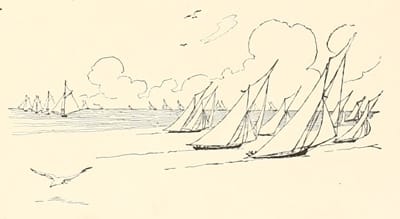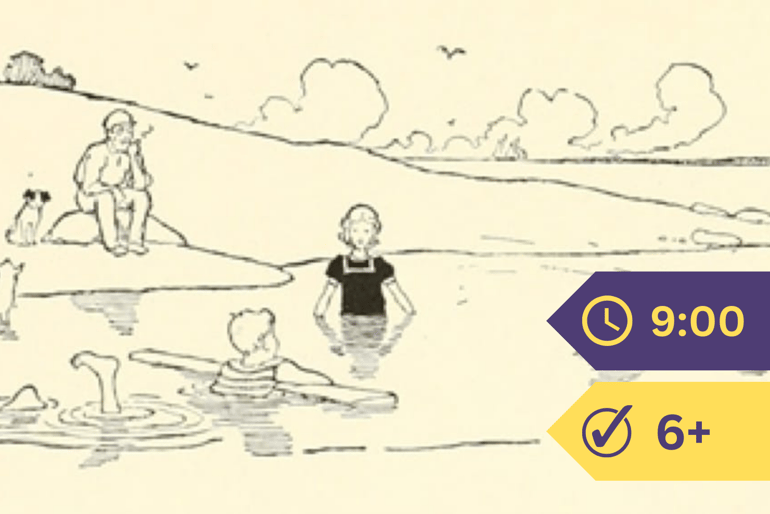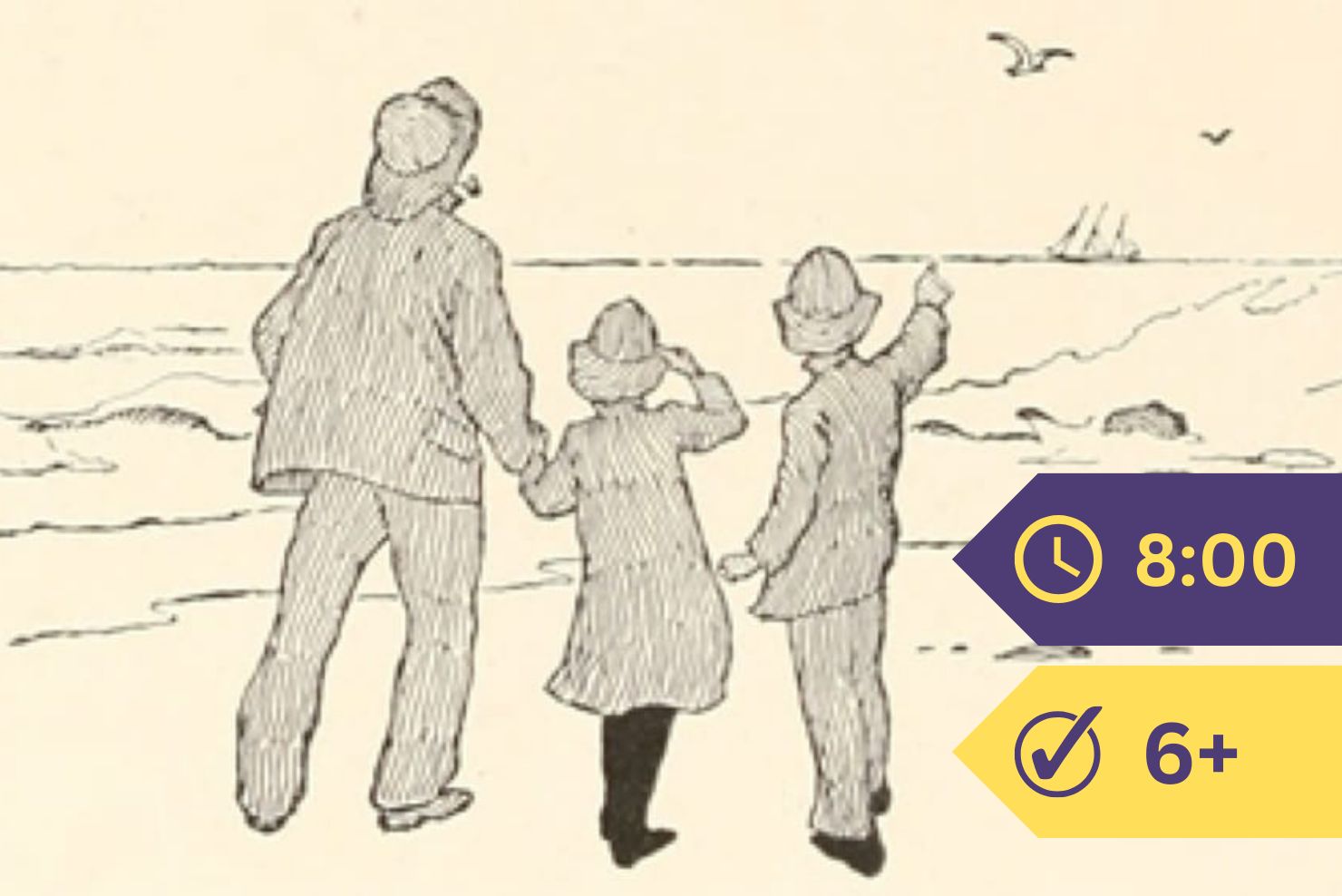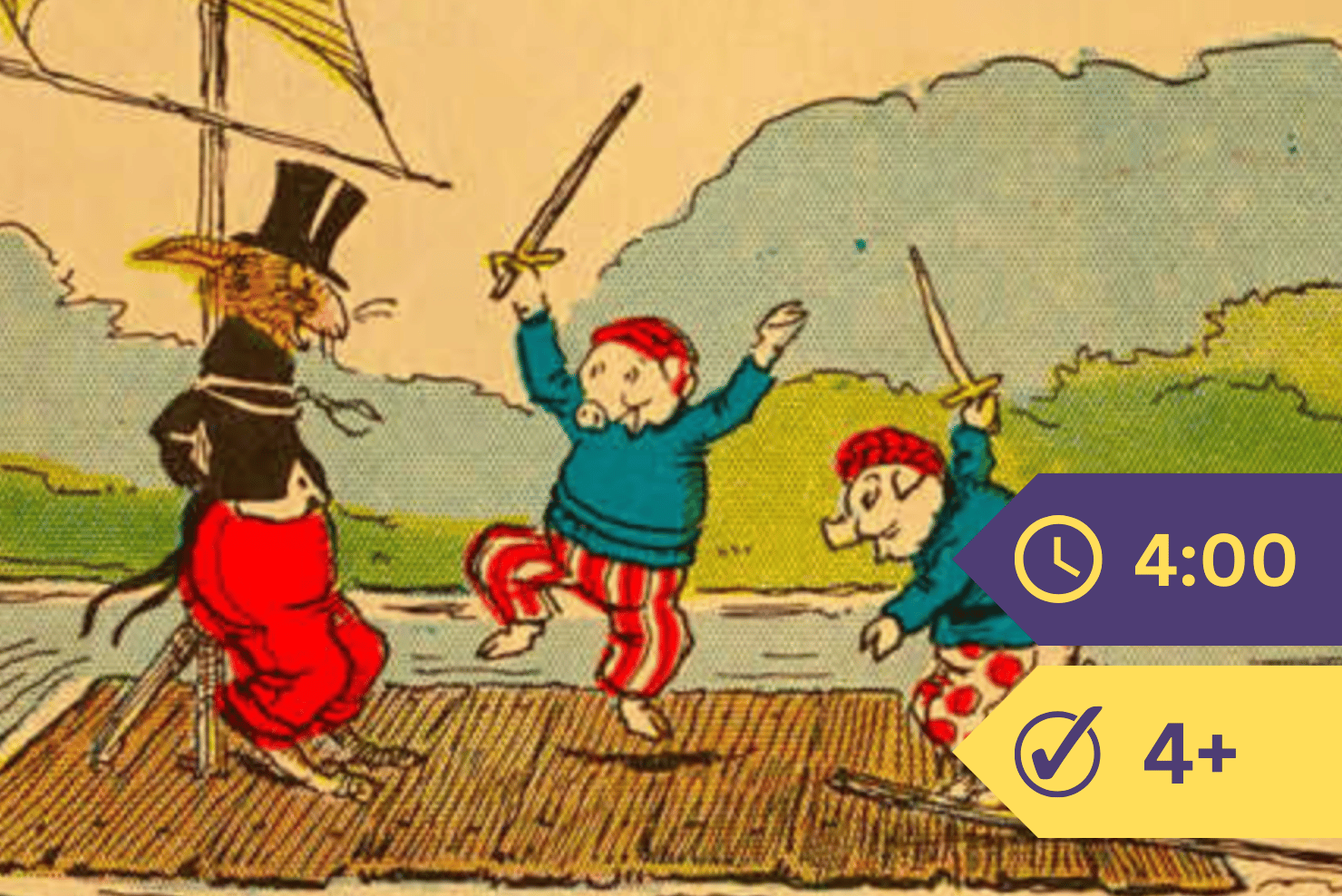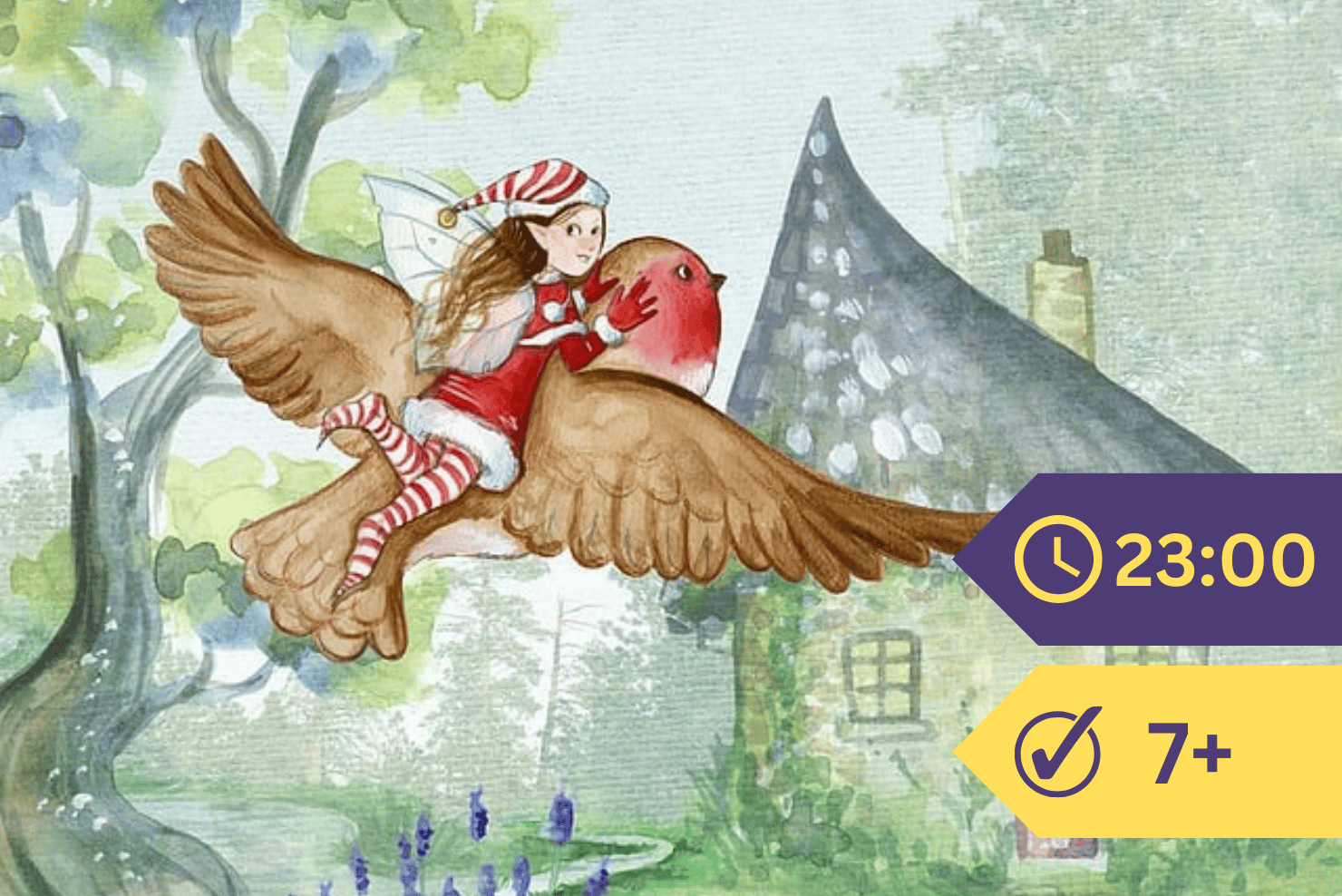At night, especially on the really dark nights, the children watched with unwavering interest the large lamp of the lighthouse on the point. Captain Hawes had explained the use of lighthouses, how they pointed the way to ships at night, like signs at street corners or intersections, and he also warned them to stay away from the rocks.
One day, he took the children rowing to the lighthouse. The lighthouse keeper took them up into the tower and proudly showed them the powerful lamp with its intricate reflectors, and explained everything. Betty admired the bright, shiny appearance of the lamp and was amazed to hear that the man himself took care of it all. She had thought that only a housekeeper could maintain such shine.
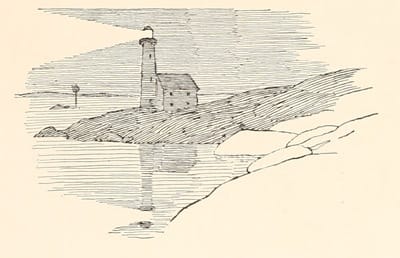
Another time, Captain Hawes took the children to Barry’s sail loft, where the sails for the new ship were being made. He had already told them something about sail making, but he knew they would understand it better by seeing it for themselves. The sail loft turned out to be, like everything related to ships, very interesting. The wide, clean floor and the men on their low benches sewing the seams of the heavy canvas, using sturdy leather “palm thimbles” instead of thimbles, made a great impression on the boy and girl. And they used even more special tools and strange items.
On the wall in a corner of the loft was a varied collection of clews and rings, which also aroused the children’s curiosity. These had to be sewn into the corners of the sails to hold the ropes for rigging. Here and there lay compact, heavy rolls of canvas, from which the sails were made, ready to be carried away and rigged to the high masts and wide yards of the ship. These were the sails that would later look so light and graceful as they carried the ship on the wind.
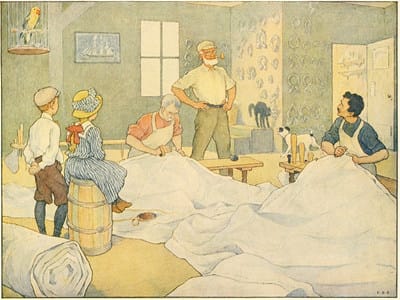
The summer days passed quickly for the children, and Captain Hawes insisted that they hurry to learn to swim. Together with the help of Patsey, they practiced daily. After their first cautious wading and splashing, they enjoyed it immensely, and before the summer was really over, they had learned to keep their heads above water. They still couldn’t swim far, but that would come with time as they built up more strength. They had at least made a start, and were rightly very proud of their achievement.
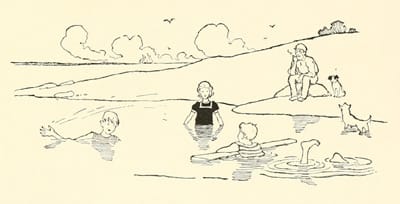
Under the guidance of the Captain, the two children also learned to row, although the oars of the boat were rather heavy for them and sometimes, annoyingly, caught in the water. The Captain called this “catching a crab”. But despite this, it was all great fun!
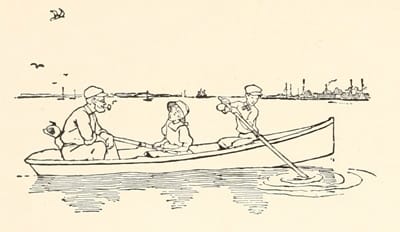
Captain Hawes often took them out in his sailboat, the Mary Ann. He sailed close to a log that belonged to the shipyard, and showed them where the wood came from for the ship’s construction. He explained how it was cut deep in the backwoods and transported on a raft down the rivers to the sea. The large raft was now held in place by a frame of logs, joined together with chains. Here, the children saw the men selecting the special logs they needed. They had to perform various tricks, like paddling and balancing with boat hooks, to get the logs in the right direction. Some would even paddle to the shipyard on a log, balancing like a tightrope walker. But accidents would occasionally happen and they would end up with more than just wet feet. This delighted their comrades.
When the logs reached the shipyard, they were sawn into planks using whip saws and machine saws, and then shaped with axes, as they had seen the workers do. Finally, they were made to fit perfectly for their place on the ship.
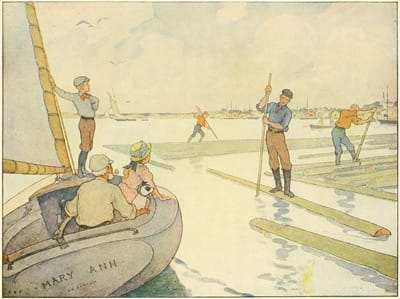
Of course, the children had to try out this wooden plank construction for themselves! So they built a raft for themselves out of loose planks that were lying along the beach. While Betty was the passenger, Bob worked hard to paddle the raft around in the shallow water. Patsey Quinn, more ambitious and used to getting wet regularly, boldly imitated the loggers in their balancing acts. This did not go entirely without mishaps, but he was not too concerned about it. Being in the water was about the same as being out of it for him.
These were busy, happy days for the children. There was always plenty to see or do. Patsey was curious about the things in the city, but Bob and Betty were completely convinced, at least for now, that the coast was a much more interesting place than the city.
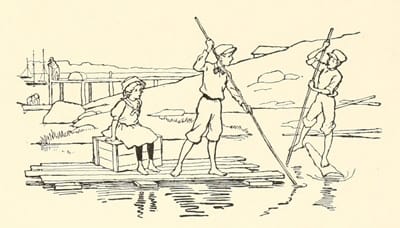
The children always heard stories about lobster fishing, as it was an important industry there. So Captain Hawes took them in his boat to see the fishermen at work as they pulled in their traps. The fishing beds were dotted with buoys. Each fisherman had his own buoy, with his own mark. Attached to each buoy was a trap on a long line. The lobsters would crawl into the traps after the bait and then not be able to get out.
But Bob and Betty were disappointed when they saw that these lobsters came out of the water dull green instead of the beautiful bright red they had expected. Captain Hawes explained that they would turn red after being cooked.
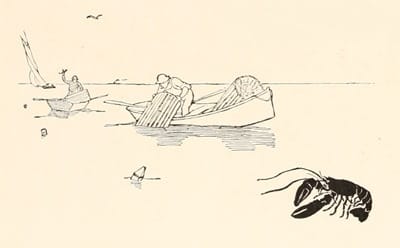
Today was the day of the launch of one of the new ships that the children had seen at their first visit to the shipyard. High tide was the best time, and the whole village turned out to see the event. Captain Hawes had told them they would soon see the ship floating in the bay. This was hard to believe. How could it be possible to ever move that large ship? “Just wait and see,” Captain Hawes assured them.
Everyone on the yard was excited and thrilled. Captain Hawes put the children on a high wooden beam where they had a good view.
The ship, decorated with cheerful fluttering flags, was clamped in her “cradle.” The ways on which she had to slide down were well greased and the builder waited until the tide was at its highest.
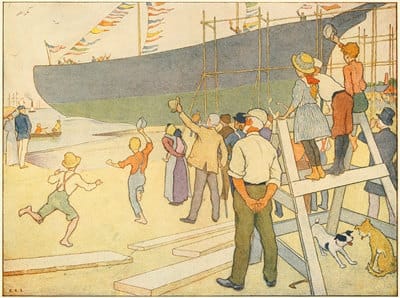
Finally, the moment arrived. The signal was given. The workmen began to work frantically to remove the ways from under the ship, set up the lifting jacks, and knock away the few remaining supports, with danger to their lives, then quickly run to the side.
Then the big ship slowly “came to life” and began to move. Slowly but steadily gaining speed, she began to slide down the ways. Quickly and faster, gaining speed, she ran, as if alive, gracefully sliding into the sea!
Then the ship rushed far into the deep water, where she remained beautifully afloat. From a mass of planks and beams, she seemed to have become a great living creature. The spectators cheered and waved their hats. The ship proudly took her place at sea, where she would spend the rest of her life.
Bob and Betty were so impressed that even the exciting sailboat race they had seen that afternoon seemed to pale in comparison to the launch of the big ship.
